 Dystonia is a chronic and incurable movement disorder. This qualitative study aimed to enhance understanding of the condition by exploring the experience of living with dystonia. Interpretative phenomenological analysis was used to analyse data gathered through semi-structured interviews. Eight participants were recruited via a UK-based dystonia charity. Three superordinate themes emerged from the data: (1) dealing with ignorance and uncertainty: navigating health services with a rare, poorly understood condition; (2) the challenge of social isolation: overcoming barriers to positive social identity; and (3) fear of psychological explanations: the impact of stigmatised attitudes towards psychological explanations for dystonia symptoms. Coping with a rare and chronic condition led to participants feeling isolated and stigmatised by health care services and their communities. Participants were able to overcome this challenge to their identities through the use of social support, particularly from other people with dystonia. Recommendations for reducing the stigmatising experiences of people with dystonia can help to ease the process of adjustment to the illness and enable people to pursue meaningful lives and positive identities. Recommendations for research are aimed at increasing knowledge about these processes. For more information click here.
Dystonia is a chronic and incurable movement disorder. This qualitative study aimed to enhance understanding of the condition by exploring the experience of living with dystonia. Interpretative phenomenological analysis was used to analyse data gathered through semi-structured interviews. Eight participants were recruited via a UK-based dystonia charity. Three superordinate themes emerged from the data: (1) dealing with ignorance and uncertainty: navigating health services with a rare, poorly understood condition; (2) the challenge of social isolation: overcoming barriers to positive social identity; and (3) fear of psychological explanations: the impact of stigmatised attitudes towards psychological explanations for dystonia symptoms. Coping with a rare and chronic condition led to participants feeling isolated and stigmatised by health care services and their communities. Participants were able to overcome this challenge to their identities through the use of social support, particularly from other people with dystonia. Recommendations for reducing the stigmatising experiences of people with dystonia can help to ease the process of adjustment to the illness and enable people to pursue meaningful lives and positive identities. Recommendations for research are aimed at increasing knowledge about these processes. For more information click here.
Publications
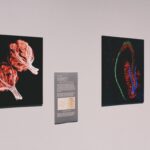 Niemann-Pick (NP) disease is a rare, autosomal recessive disorder characterized by visceromegaly and neurological alterations due to the excessive storage of lipids, sphingomyelin, and cholesterol. It commonly affects the child population, and only 6% of it occurs in the adult population. Type A is classified as the acute form, type B is the latest and with the best prognosis, and type C is characterized by neurological alteration. The diagnosis is based on enzymatic tests and genetic sequencing, with the latter being the diagnostic confirmation test. No specific treatment exists for this entity, although some patients with NPC type C may benefit from pharmacological treatment with miglustat. The objective of this paper is to describe the clinical characteristics of a grown patient with Niemann-Pick diagnosis type B. This article reports the case of a 55-year-old adult patient with a three-year clinical history consisting of splenomegaly and hematological disorders, without neurological symptoms ruling out frequent pathologies. Type B NP disease is diagnosed by a mutation in the sphingomyelin phosphodiesterase 1 (SMPD1) gene. The patient was receiving multidisciplinary support treatment. Although NP disease is a rare disease according to the literature, it is important to consider this group of disorders as a differential diagnosis, when other more common pathologies have been ruled out in patients with isolated splenomegaly and thrombocytopenia. For more information click here.
Niemann-Pick (NP) disease is a rare, autosomal recessive disorder characterized by visceromegaly and neurological alterations due to the excessive storage of lipids, sphingomyelin, and cholesterol. It commonly affects the child population, and only 6% of it occurs in the adult population. Type A is classified as the acute form, type B is the latest and with the best prognosis, and type C is characterized by neurological alteration. The diagnosis is based on enzymatic tests and genetic sequencing, with the latter being the diagnostic confirmation test. No specific treatment exists for this entity, although some patients with NPC type C may benefit from pharmacological treatment with miglustat. The objective of this paper is to describe the clinical characteristics of a grown patient with Niemann-Pick diagnosis type B. This article reports the case of a 55-year-old adult patient with a three-year clinical history consisting of splenomegaly and hematological disorders, without neurological symptoms ruling out frequent pathologies. Type B NP disease is diagnosed by a mutation in the sphingomyelin phosphodiesterase 1 (SMPD1) gene. The patient was receiving multidisciplinary support treatment. Although NP disease is a rare disease according to the literature, it is important to consider this group of disorders as a differential diagnosis, when other more common pathologies have been ruled out in patients with isolated splenomegaly and thrombocytopenia. For more information click here.
 Werner syndrome (WS) is rare adult-onset progeria characterized by premature aging and early death. Patients develop normally until adolescence and usually present in early adulthood. Our case highlights a common presentation of this uncommon disease, wherein a 29-year-old non-obese male with no known risk factors developed uncontrolled diabetes, hypertriglyceridemia, and rapidly progressive atherosclerotic vascular disease. Careful observation with attention to the presence of characteristic physical features and subsequent genetic testing helped diagnose the patient with this uncommon progeroid syndrome. Our case adds to the literature about this rare disease especially in patients of middle-eastern descent and also highlights the importance of having a high index of suspicion for WS when the initial clinical presentation is atypical. For more information click here.
Werner syndrome (WS) is rare adult-onset progeria characterized by premature aging and early death. Patients develop normally until adolescence and usually present in early adulthood. Our case highlights a common presentation of this uncommon disease, wherein a 29-year-old non-obese male with no known risk factors developed uncontrolled diabetes, hypertriglyceridemia, and rapidly progressive atherosclerotic vascular disease. Careful observation with attention to the presence of characteristic physical features and subsequent genetic testing helped diagnose the patient with this uncommon progeroid syndrome. Our case adds to the literature about this rare disease especially in patients of middle-eastern descent and also highlights the importance of having a high index of suspicion for WS when the initial clinical presentation is atypical. For more information click here.
 Hereditary angioedema with C1 inhibitor deficiency (C1-INH-HAE) is characterized by recurrent swelling in subcutaneous or submucosal tissues. Symptoms often begin by age 5-11 years and worsen during puberty, but attacks can occur at any age and recur throughout life. Disease course in elderly patients is rarely reported. The Icatibant Outcome Survey (IOS) is an observational study evaluating the safety, tolerability, and efficacy of icatibant. We conducted descriptive analyses in younger (age < 65 years) versus elderly patients (age ≥ 65 years). Here, we report patient characteristics and safety-related findings. Elderly patients with C1-INH-HAE were significantly older at diagnosis and had greater delay in diagnosis than younger patients. Elderly patients contributed to approximately 10% of the icatibant-treated attacks. Our analysis found similar AE rates (overall and possibly/probably related) in icatibant-treated elderly versus younger patients, despite the fact that elderly patients had significantly more comorbidities and were receiving a greater number of concomitant medications. Our analysis did not identify any new or unexpected safety concerns. For more information click here.
Hereditary angioedema with C1 inhibitor deficiency (C1-INH-HAE) is characterized by recurrent swelling in subcutaneous or submucosal tissues. Symptoms often begin by age 5-11 years and worsen during puberty, but attacks can occur at any age and recur throughout life. Disease course in elderly patients is rarely reported. The Icatibant Outcome Survey (IOS) is an observational study evaluating the safety, tolerability, and efficacy of icatibant. We conducted descriptive analyses in younger (age < 65 years) versus elderly patients (age ≥ 65 years). Here, we report patient characteristics and safety-related findings. Elderly patients with C1-INH-HAE were significantly older at diagnosis and had greater delay in diagnosis than younger patients. Elderly patients contributed to approximately 10% of the icatibant-treated attacks. Our analysis found similar AE rates (overall and possibly/probably related) in icatibant-treated elderly versus younger patients, despite the fact that elderly patients had significantly more comorbidities and were receiving a greater number of concomitant medications. Our analysis did not identify any new or unexpected safety concerns. For more information click here.
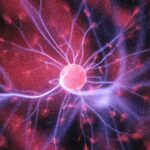 Hirschsprung disease (HSCR) is a rare congenital disorder caused by an incorrect enteric nervous system development due to a failure in migration, proliferation, differentiation and/or survival of enteric neural crest cells. HSCR is a complex genetic disease, where alterations at different molecular levels are required for the manifestation of the disease. In addition, a wide spectrum of mutations affecting many different genes cause HSCR, although the occurrence and severity of HSCR from many cases still remain unexplained. This review summarizes the current knowledge about molecular genetic basis of HSCR. For more information click here.
Hirschsprung disease (HSCR) is a rare congenital disorder caused by an incorrect enteric nervous system development due to a failure in migration, proliferation, differentiation and/or survival of enteric neural crest cells. HSCR is a complex genetic disease, where alterations at different molecular levels are required for the manifestation of the disease. In addition, a wide spectrum of mutations affecting many different genes cause HSCR, although the occurrence and severity of HSCR from many cases still remain unexplained. This review summarizes the current knowledge about molecular genetic basis of HSCR. For more information click here.
Assessment of the risk and characterization of non-melanoma skin cancer in Kindler syndrome
 Kindler Syndrome (KS) is a rare genodermatosis characterized by skin fragility, skin atrophy, premature aging and poikiloderma. It is caused by mutations in the FERMT1 gene, which encodes kindlin-1, a protein involved in integrin signalling and the formation of focal adhesions. Several reports have shown the presence of non-melanoma skin cancers in KS patients but a systematic study evaluating the risk of these tumors at different ages and their potential outcome has not yet been published. We have here addressed this condition in a retrospective study of 91 adult KS patients, characterizing frequency, metastatic potential and body distribution of squamous cell carcinoma (SCC) in these patients. SCC developed in 13 of the 91 patients. The youngest case arose in a 29-year-old patient; however, the cumulative risk of SCC increased to 66.7% in patients over 60 years of age. The highly aggressive nature of SCCs in KS was confirmed showing that 53.8% of the patients bearing SCCs develop metastatic disease. Our data also showed there are no specific mutations that correlate directly with the development of SCC; however, the mutational distribution along the gene appears to be different in patients bearing SCC from SCC-free patients. The body distribution of the tumor appearance was also unique and different from other bullous diseases, being concentrated in the hands and around the oral cavity, which are areas of high inflammation in this disease. This study characterizes SCCs in the largest series of KS patients reported so far, showing the high frequency and aggressiveness of these tumors. It also describes their particular body distribution and their relationship with mutations in the FERMT-1 gene. These data reinforce the need for close monitoring of premalignant or malignant lesions in KS patients. For more information click here.
Kindler Syndrome (KS) is a rare genodermatosis characterized by skin fragility, skin atrophy, premature aging and poikiloderma. It is caused by mutations in the FERMT1 gene, which encodes kindlin-1, a protein involved in integrin signalling and the formation of focal adhesions. Several reports have shown the presence of non-melanoma skin cancers in KS patients but a systematic study evaluating the risk of these tumors at different ages and their potential outcome has not yet been published. We have here addressed this condition in a retrospective study of 91 adult KS patients, characterizing frequency, metastatic potential and body distribution of squamous cell carcinoma (SCC) in these patients. SCC developed in 13 of the 91 patients. The youngest case arose in a 29-year-old patient; however, the cumulative risk of SCC increased to 66.7% in patients over 60 years of age. The highly aggressive nature of SCCs in KS was confirmed showing that 53.8% of the patients bearing SCCs develop metastatic disease. Our data also showed there are no specific mutations that correlate directly with the development of SCC; however, the mutational distribution along the gene appears to be different in patients bearing SCC from SCC-free patients. The body distribution of the tumor appearance was also unique and different from other bullous diseases, being concentrated in the hands and around the oral cavity, which are areas of high inflammation in this disease. This study characterizes SCCs in the largest series of KS patients reported so far, showing the high frequency and aggressiveness of these tumors. It also describes their particular body distribution and their relationship with mutations in the FERMT-1 gene. These data reinforce the need for close monitoring of premalignant or malignant lesions in KS patients. For more information click here.
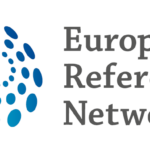 The first call for new members to join existing 24 ERNs is going to be launched on 30 of September 2019 until 30 of November 2019.
The first call for new members to join existing 24 ERNs is going to be launched on 30 of September 2019 until 30 of November 2019.
Created under the 2011 Directive on Patient Rights’ in Cross-Border Healthcare, European Reference Networks (ERNs) are cross-border networks bringing together centres of expertise and reference centres of European hospitals to tackle rare or low prevalence and complex diseases and conditions that require highly specialised healthcare. ERNs enable specialists in Europe to share learnings and discuss complex patient cases, providing advice on the most appropriate diagnosis and the best treatment. A key principle of ERNs is to let the knowledge travel rather than the patient leading to economies of scale and more efficient use of costly resources. For more information click here.
Genotype/phenotype correlations of childhood-onset congenital sideroblastic anaemia in a European cohort
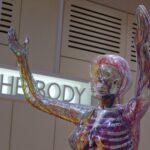 Congenital sideroblastic anaemia (CSA) is a rare disease caused by germline mutations of genes involved in haem and iron-sulphur cluster formation, and mitochondrial protein biosynthesis. We performed a retrospective multicentre European study of a cohort of childhood-onset CSA patients to explore genotype/phenotype correlations. We studied 23 females and 20 males with symptoms of CSA. Among the patients, the most frequently mutated genes were ALAS2 (n = 10; 23·3%) and SLC25A38 (n = 8; 18·6%), causing isolated forms of microcytic anaemia of varying severity. Five patients with SLC19A2 mutations suffered from thiamine-responsive megaloblastic anaemia and three exhibited the ‘anaemia, deafness and diabetes’ triad. Three patients with TRNT1 mutations exhibited severe early onset microcytic anaemia associated with thrombocytosis, and two exhibited B-cell immunodeficiency, inflammatory syndrome and psychomotor delay. The prognoses of patients with TRNT1 and SLC2A38 mutations were generally dismal because of comorbidities or severe iron overload. No molecular diagnosis could be established in 14/43 cases. This study emphasizes the frequency of ALAS2 and SLC25A38 mutations and provides the largest comprehensive analysis to date of genotype/phenotype correlations in CSA. Further studies of CSA patients with data recorded in an international registry would be helpful to improve patient management and establish standardized guidelines. For more information click here.
Congenital sideroblastic anaemia (CSA) is a rare disease caused by germline mutations of genes involved in haem and iron-sulphur cluster formation, and mitochondrial protein biosynthesis. We performed a retrospective multicentre European study of a cohort of childhood-onset CSA patients to explore genotype/phenotype correlations. We studied 23 females and 20 males with symptoms of CSA. Among the patients, the most frequently mutated genes were ALAS2 (n = 10; 23·3%) and SLC25A38 (n = 8; 18·6%), causing isolated forms of microcytic anaemia of varying severity. Five patients with SLC19A2 mutations suffered from thiamine-responsive megaloblastic anaemia and three exhibited the ‘anaemia, deafness and diabetes’ triad. Three patients with TRNT1 mutations exhibited severe early onset microcytic anaemia associated with thrombocytosis, and two exhibited B-cell immunodeficiency, inflammatory syndrome and psychomotor delay. The prognoses of patients with TRNT1 and SLC2A38 mutations were generally dismal because of comorbidities or severe iron overload. No molecular diagnosis could be established in 14/43 cases. This study emphasizes the frequency of ALAS2 and SLC25A38 mutations and provides the largest comprehensive analysis to date of genotype/phenotype correlations in CSA. Further studies of CSA patients with data recorded in an international registry would be helpful to improve patient management and establish standardized guidelines. For more information click here.
 Additional documentation is published in the form of “FAQs” to help the HCP candidates to prepare their application for the ERN membership call. The FAQs contain frequently asked questions related to the ERNs in general, and to the application process in particular. The FAQs will be updated on a regular basis.The Call for the healthcare providers to join existing ERNs will be published in the coming weeks, together with a dedicated IT tool to submit applications. For more information click here.
Additional documentation is published in the form of “FAQs” to help the HCP candidates to prepare their application for the ERN membership call. The FAQs contain frequently asked questions related to the ERNs in general, and to the application process in particular. The FAQs will be updated on a regular basis.The Call for the healthcare providers to join existing ERNs will be published in the coming weeks, together with a dedicated IT tool to submit applications. For more information click here.
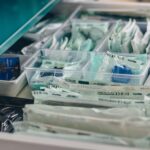 The European Huntington’s Disease Network (EHDN) commissioned an international task force to provide global evidence-based recommendations for everyday clinical practice for treatment of Huntington’s disease (HD). The objectives of such guidelines are to standardize pharmacological, surgical and non-pharmacological treatment regimen and improve care and quality of life of patients. A formalized consensus method, adapted from the French Health Authority recommendations was used. First, national committees (French and English Experts) reviewed all studies published between 1965 and 2015 included dealing with HD symptoms classified in motor, cognitive, psychiatric, and somatic categories. Quality grades were attributed to these studies based on levels of scientific evidence. Provisional recommendations were formulated based on the strength and the accumulation of scientific evidence available. When evidence was not available, recommendations were framed based on professional agreement. A European Steering committee supervised the writing of the final recommendations through a consensus process involving two rounds of online questionnaire completion with international multidisciplinary HD health professionals. Patients’ associations were invited to review the guidelines including the HD symptoms. Two hundred and nineteen statements were retained in the final guidelines. We suggest to use this adapted method associating evidence base-medicine and expert consensus to other rare diseases. For more information click here.
The European Huntington’s Disease Network (EHDN) commissioned an international task force to provide global evidence-based recommendations for everyday clinical practice for treatment of Huntington’s disease (HD). The objectives of such guidelines are to standardize pharmacological, surgical and non-pharmacological treatment regimen and improve care and quality of life of patients. A formalized consensus method, adapted from the French Health Authority recommendations was used. First, national committees (French and English Experts) reviewed all studies published between 1965 and 2015 included dealing with HD symptoms classified in motor, cognitive, psychiatric, and somatic categories. Quality grades were attributed to these studies based on levels of scientific evidence. Provisional recommendations were formulated based on the strength and the accumulation of scientific evidence available. When evidence was not available, recommendations were framed based on professional agreement. A European Steering committee supervised the writing of the final recommendations through a consensus process involving two rounds of online questionnaire completion with international multidisciplinary HD health professionals. Patients’ associations were invited to review the guidelines including the HD symptoms. Two hundred and nineteen statements were retained in the final guidelines. We suggest to use this adapted method associating evidence base-medicine and expert consensus to other rare diseases. For more information click here.
